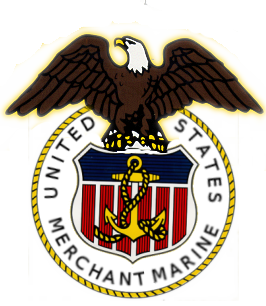Optional Congress Tours
Buffalo, New York
02-05 October 2024
Four Centuries of Naval and Maritime History
There is something for everyone in Buffalo. Companions are encouraged to consider participating in this Congress and taking advantage of exploring Western New York and this unique city. Buffalo was front and center at many of the most pivotal moments of the 19th and 20th centuries. Its history is surprising and rich, replete with countless historic sites and museum-worthy stories. Battles were waged here as the War of 1812 played out at Old Fort Niagara. Fortunes were made, jazz legends jammed and American presidents lived, died, governed and are interred there.
The Hyatt Regency Buffalo Concierge is pleased to assist Companions with excursions to local attractions that are not included in the Naval Order’s Schedule of Events.
The Seneca Indians have occupied this region for over 1,000 years. Buffalo originated as a small trading community in about 1789 and grew quickly to become the quintessential 19th century boomtown, rising to industrial preeminence. The city’s position at the western terminus of the Erie Canal made it the “Gateway to the West”—the departure point for immigrants on their way to the heartland. Buffalo was also a gateway for runaway slaves seeking freedom on the Underground Railroad, then later fertile ground for the Civil Rights Movement.
A trip to the Buffalo History Museum begins a journey of discovery and several sites and museums expand the story. The Buffalo History Museum has been Western New York's premier historical organization since 1862 and tells authentic stories that make the region unique. Its collections, exhibits, and programs tell the stories of the people, events, and movements that illustrate Western New York's essential place in shaping American history.
The Buffalo and Erie County Naval & Military Park is the largest inland floating history museum in the United States. This unique family destination features 3 decommissioned naval vessels: USS LITTLE ROCK (CG-4), USS THE SULLIVANS (DD-537) and USS CROAKER (IXSS-246). Along with the ships, there are a variety of smaller vehicles, vessels, and aircraft are also on display. These include the Gyrodyne X-Ron 1 Rotorcycle one-man helicopter used by the US Marine Corps in the late fifties and early sixties, an Army M41 Walker Bulldog tank, a Marine Corps M-84 Armored personnel carrier, a UH-1 Huey flown in Vietnam, an Air Force F-101 Voodoo flown by the New York Air National Guard's 136th Fighter-Interceptor Squadron at Niagara Falls Air Reserve Station, a Nasty-class Fast Patrol Boat (PTF), the PTF-17 used by the Navy in Vietnam, a Navy FJ Fury (FJ-4) jet (equivalent to the Air Force's F-86 Sabre), and a USAAF P-39 Airacobra manufactured at Bell Aircraft in Buffalo which saw service in World War II. The sail and rudder of the submarine USS BOSTON (SSN-703) are also on display here.
The Buffalo Harbor Museum was established to increase and diffuse knowledge and appreciation of maritime history, art and science related to the City of Buffalo and the Niagara Frontier. It collects, preserves and displays objects of historic, artistic and scientific interest. The museum exhibits provide an overview to the history and development of the waterfront while relating artifacts and photographs to the trade and industry that made Buffalo the port of commerce. A research library is maintained by the museum and is open to the public along with regular meetings that feature guest speakers who discuss topics of maritime interest.
The Theodore Roosevelt Inaugural National Historic Site tells the story of the fateful day during the Pan American Exposition in 1901 when the world’s eyes were on Buffalo when President William McKinley died at the hands of an assassin and Theodore Roosevelt was inaugurated as our 26th president. The oldest part of the National Historic Site includes the lone surviving structure from the Buffalo Barracks compound. Due to tensions between the United States and Anglo-Canada, a military post was constructed to ensure border security. Built in 1839, the structure was the Barracks' officers' quarters. The first part of the house is a museum displaying many items from the Exposition, including wine glasses, plates, playing cards, and the key to the Temple of Music, a concert hall and auditorium built for the Exposition. The last room is a recreation of the office Roosevelt used during his presidency.
The Buffalo Presidential Center encourages the study, exploration, interpretation and public awareness of Buffalo and Western New York's contribution to the Presidency and national affairs. It focuses on Buffalo's two presidents, Millard Fillmore and Grover Cleveland, and explores the role that Western New Yorkers have had in shaping our nation as leading participants in national government, the judiciary, policymaking, and public affairs.
The Erie Canal, built between 1817 and 1825, links the Atlantic Coast to the west and epitomizes American ingenuity and ambition. Buffalo is both a testament to and beneficiary of the canal’s power. The endless traffic of Great Lakes ships, canal boats and railcars directly influenced Buffalo’s growth and prosperity, making it an icon of culture, architecture and the arts.
Buffalo’s Canalside, also referred to as Erie Canal Harbor, is a commercial and residential district in downtown Buffalo recognizes local heritage, and is a popular gathering spot. The Lockport Locks & Erie Canal Cruise provides an experience of being raised and lowered 50 feet along the intricate “Flight of Five” system of locks. Buffalo helped build the canal and the canal helped build Buffalo. It is inextricably entwined with the city and no visit to the “Queen City” would be complete with a trip to the waterfront!
Niagara Falls is one of the continent’s most famous natural attraction for honeymooners and for such stunts as walking over the falls on a tightrope or going over them in a barrel. Increasingly, however, the appeal of the site has become its beauty and uniqueness as a physical phenomenon. It is a group of three waterfalls at the southern end of Niagara Gorge, spanning the border between the province of Ontario in Canada and the state of New York in the United States. The largest of the three is Horseshoe or Canadian Falls that straddles the international border of the two countries. The smaller American Falls and Bridal Veil Falls lie within the United States. Bridal Veil Falls is separated from Horseshoe Falls by Goat Island and from American Falls by Luna Island, with both islands situated in New York.
Formed by the Niagara River, which drains Lake Erie into Lake Ontario, the combined falls have the highest flow rate of any waterfall in North America that has a vertical drop of more than 160 ft. During peak daytime tourist hours, more than 5.9 million cu ft of water goes over the crest of the falls every minute. Horseshoe Falls is the most powerful waterfall in North America, as measured by flow rate. Niagara Falls is famed for its beauty and is a valuable source of hydroelectric power. Balancing recreational, commercial, and industrial uses has been a challenge for the stewards of the falls since the 19th century.
The oldest and best known tourist attraction at Niagara Falls is the Maid of the Mist boat cruise, named for an alleged ancient Ongiara Indian mythical character, which has carried passengers into the rapids immediately below the falls since 1846. Cruise boats operate from both sides of the falls, with the Maid of the Mist operating from the American side and Hornblower Cruises from the Canadian side.
From the United States side, American Falls can be viewed from walkways along Prospect Point Park, which also features the Prospect Point Observation Tower and a boat dock for the Maid of the Mist. Goat Island offers more views of the falls and is accessible by foot and automobile traffic by bridge above American Falls. From Goat Island, the Cave of the Winds is accessible by elevator and leads hikers to a point beneath Bridal Veil Falls. Also on Goat Island are the Three Sisters Islands, the Power Portal where a statue of Nikola Tesla (the inventor whose patents for the AC induction motor and other devices for AC power transmission helped make the harnessing of the falls possible) can be seen, and a walking path that enables views of the rapids, the Niagara River, the gorge, and all of the falls. Most of these attractions lie within the Niagara Falls State Park. The Niagara Gorge Discovery Center showcases the natural and local history of Niagara Falls and the Niagara Gorge. Similarly, Letchworth State Park, also known as the “Grand Canyon of the East” is home to three major waterfalls, miles of hiking trails, and stunning views of the Genesee River Gorge.
Buffalo’s African-American heritage runs deep. The Michigan Street Baptist Church, a stop along the Underground Railroad, to legendary jazz history at The Colored Musicians Club & Jazz Museum, a National Historic Site and countless businesses, restaurants, sites and other attractions tell the rich stories of black culture in Buffalo. Of particular note is the story of Mary Talbert who facilitated secret planning of the Niagara Movement that led to the founding of the National Association for the Advancement of Colored People (NAACP). Talbert served as president, vice president and director of the NAACP, was the first African American woman to receive the prestigious NAACP Spingarn Award and was inducted into the National Women’s Hall of Fame. She is buried at Forest Lawn.
The preserved home of a prominent minister in Buffalo, the Rev. J. Edward Nash provides a window into the city’s proud African-American heritage. The Freedom Wall located at the intersection of Michigan Avenue and East Ferry Street has deep ties to the Civil Rights movement featuring massive portraits of prominent Civil Rights leaders from Buffalo and beyond. The Niagara Falls Underground Railroad Heritage Center was the final stop on the Underground Railroad before seeking freedom in Canada. It shares stories of Underground Railroad freedom seekers and abolitionists in Niagara Falls.
Prior to the end of the Civil War in 1865, thousands of freedom seekers sought to escape slavery. They relied on a network of sympathizers and safe houses known as the Underground Railroad to help them on their quest for freedom. With its location on the border of Canada, Niagara Falls was one of its most important destinations. Free African Americans called it home and many worked in the city’s hotels and inns. For those still enslaved, the city was the much-dreamed-of last stop before crossing the Niagara River to Canada. These are the long overlooked and untold stories of the waiters and porters of the historic Cataract House Hotel and the courageous runaway slaves they helped escape bondage — told in riveting detail at the Niagara Falls Underground Railroad Heritage Center at the new train station in Niagara Falls, the Heritage Center uses newspapers articles, letters and diary entries written at the time to illuminate the epic struggle of enslaved African Americans to gain their freedom in Canada.
Buffalo’s Forest Lawn Cemetery is on the National Register of Historic Places with many persons who influenced the cultural, industrial and political development of the United States interred there. Its style was popular in the mid-19th century due to the overcrowding and health concerns of urban cemeteries. It was built outside of the city, far enough to be separated from the city, but close enough for visitors to easily get there. It contains elaborate monuments, memorials, and mausoleums in a landscaped park-like setting intended to provide a place for the general public to enjoy outdoor recreation amidst art and sculpture previously available only for the wealthy.
During the early 1900s, Pierce-Arrow, along with Packard and Peerless were considered America’s finest luxury automobiles. The Buffalo Transportation Pierce-Arrow Museum focuses on Buffalo's transportation history featuring Pierce Arrow, Thomas Flyer, electric vehicles, vintage bicycles, motorcycles, muscle cars and trucks, Jello wagon, hood ornaments, Women’s' Transportation Hall of Fame, and more. A special feature is the full-scale Buffalo Filling Station by Frank Lloyd Wright, designed for Buffalo in 1927 but never built.
The Buffalo Niagara Heritage Village is an open-air museum dedicated to preserve, interpret, and exhibit the agricultural history and rural heritage of the Buffalo Niagara region. The 35-acre site includes 10 historic buildings, a main exhibit building, a collections storage facility, the Niederlander Research Library, and a Museum Store. It is home to a collection of over 40,000 artifacts of the agricultural and industrial trades, heritage crafts, and material culture of 19th- and 20th-century Western New York.
The Steel Plant Museum of Western New York provides a glimpse of American industrial prowess. It was established to help preserve and document the memories of the steelmaking in Western New York. The majority of the collection is from Bethlehem Steel’s Lackawanna plan, artifacts from Republic Steel, Hanna Furnace and other local companies are also represented. Union efforts to improve working condition are documented in grievance files and correspondence kept in the museum’s Reference Library. Their hard-won benefits are listed in contract booklets that workers studied diligently. The Reference Library also contains steel-related catalogs, technical papers, books and manuals.
The Herschell Carrousel Factory Museum is a historic carousel factory building listed on the National Register of Historic Places. The company and operated from 1876 to 1959 and produced wooden carousels into the 1930s. Starting in the 1930', the company began building adult rides, such as the "Twister," the "Hurricane" and the "Sky Wheel," a double Ferris wheel nearly 90 feet tall. The factory complex was constructed between about 1910 and 1915 and consists of six primary structures and five contributory additions. Exhibits and demonstrations include: The Carving Floor; The Wurlitzer Music Department; The Paint Shop; The Jeanette E. Jones Children's Gallery; The Roundhouse; and The Loading Dock. Two operating carousels give visitors first-hand experience of the magical ride and authentic band organ music. The Wurlitzer Music Department is home to over 10 historic band organs and features the only functioning Wurlitzer Perforator still in existence. The museum still operates this equipment and produces band organ rolls from Wurlitzer's rolls list.
The Seneca Nation of Indians is one of the original five nations of Upstate New York’s Iroquois Confederacy. Known as the “Keeper of the Western Door,” the Senecas controlled trade at the western edge of the confederacy, hunting, fishing and farming throughout the region. The Seneca-Iroquois Onöhsagwë Cultural Center in Salamanca, less than 90 minutes southeast of Buffalo, tells the stories of this important North American tribe. One story speaks of Chief Red Jacket, a Seneca orator and one of the most prominent Native American leaders in U.S. history. He negotiated on behalf of his nation in the wake of the American Revolution, securing territory in New York state. In 1792, President George Washington presented Red Jacket with a peace medal, which is on display in the Buffalo History Museum. His grave is at Forest Lawn.
In the years following the Revolutionary War, tensions between the United States and Great Britain still remained. In 1812, the United States engaged in a war against the United Kingdom, its North American colonies in Canada and their American Indian allies. One of the three major theaters for this two-and-a-half-year war was on the American-Canadian frontier. Old Fort Niagara was one of the war’s battlegrounds. Originally built by the French in 1678 to protect their interests in North America, Old Fort Niagara began the war in American hands, but was captured and controlled by the British from 1813-1815. British forces relinquished Old Fort Niagara to the U.S. with the Treaty of Ghent and the fort has been under American control ever since. In all, the fort has played a role in multiple wars, ranging from the Battle of Fort Niagara in the French & Indian War to serving as a training station for soldiers during World War I and World War II.
The Buffalo City Hall is the seat for municipal government and listed on the National Register of Historic Places. The 32-story, 398-foot-tall Art Deco building was completed in 1931. It is one of the largest and tallest municipal buildings in the United States and is also one of the tallest buildings in Western New York.
Shea's Performing Arts Center is a theater for touring Broadway musicals and special events with about 3,000 seats in an acre structure. Originally called Shea's Buffalo, it was opened in 1926 to show silent movies. It was modeled in a combination of Spanish and French Baroque and Rococo styles, the theatre was designed to resemble opera houses and palaces of Europe of the 17th and 18th centuries. The interior was designed by world-renowned designer/artist Louis Comfort Tiffany with most of the elements still in place today. Many of the furnishings and fixtures were supplied by Marshall Field's in Chicago and included immense fine quality Czechoslovakian crystal chandeliers.
The Buffalo AKG Art Museum is one of the oldest museums dedicated to the art of our time, and the sixth-oldest public art institution in the United States. It was founded in December 1862 as the Buffalo Fine Arts Academy with former President Millard Fillmore among its incorporators. Throughout its evolution to the Albright Art Gallery, the Albright-Knox Art Gallery, and now the Buffalo AKG has displayed an extraordinary collection of modern and contemporary art.
The 156 acre Buffalo and Erie County Botanical Gardens are located within South Park. Creation of these gardens first began in 1868 when the Buffalo Parks Commission met with landscape architect Fredrick Law Olmsted, Sr., and Partners. The conservatory's tri-domed glass, wood and steel building was designed by Lord & Burnham, who were among the premier conservatory designers of the time. Construction methods were based upon the famous Crystal Palace and Kew Gardens Palm House in England. When built in 1897-1899, it was one of the largest public greenhouses in the country. Today there are fewer than a dozen large Victorian conservatories in America. This is one of only two with a tri-dome design (the New York Botanical Garden is the other). The first director, Professor John F. Cowell, oversaw the growing of plants for the park and personally located and obtained unusual tree specimens. He spent decades exploring the Americas and the Caribbean, sending back seeds and small plants for the conservatory. Shortly after it opened, thousands of visitors to the 1901 Pan-American Exposition visited South Park's conservatory and gardens, which thus quickly gathered national renown.
Founded in 1875, the Buffalo Zoo is the third oldest zoo in the United States. Each year, the Zoo welcomes approximately 400,000 visitors and is the second largest tourist attraction in Western New York, second only to Niagara Falls. Located on 23.5 acres of Buffalo’s beautiful Delaware Park, the Zoo exhibits a diverse collection of wild and exotic animals and more than 320 different species of plants. Open year-round, the Zoo is a constant source of conservation, education and recreation for Western New York.
The Martin House is a National Historic Landmark that exemplifies Frank Lloyd Wright’s Prairie House ideal and ranks as one of his finest residential works. Designed for Larkin Soap Company executive, Darwin D. Martin, the multi-residential estate is a one-of-a-kind composition consisting of the main Martin House, the Barton House, a carriage house with chauffeur’s quarters and stables, a glass-roofed conservatory linked to the main house by a 100-foot pergola, and a gardener’s cottage. Tours explore the restored and reconstructed buildings, surrounding landscape, and an extensive collection of art glass and furnishings, all designed by Wright, which together form a totally integrated architectural masterwork.
Buffalo is second most populous city in New York. Originating as a small trading community, Buffalo was destroyed and rebuilt during the War of 1812 then grew quickly after the opening of the Erie Canal in 1825. The city played a pivotal role combatting slavery and experienced explosive growth. In the early 20th century, Buffalo was one of the most populous cities in the United States, hosted the Pan-American Exposition and is emblematic of the rise and fall of the “rust belt” losing over half of its population from 1950 to 2010. Once again, Buffalo is demonstrating its potential and resilience by reinvigorating its economy with advanced manufacturing, healthcare and education.
The 2024 Congress of the General Commandery is an exciting opportunity to meet in a region that played a pivotal role in our Nation’s history. In conjunction with necessary Naval Order business, there are countless attractions for Companions to pursue personal interests. We look forward to seeing you at the Congress in “the City of Light.”
Home • Leadership Lessons • Who We Are • Donate • Contact






































